Clean your oven frequently. I know, you don’t want to hear this. But it’s important, so listen up. Let’s take time to discuss the cleanliness of your oven and how it can impact your bakes. As you may have learned in a previous post, the thermometers in your oven can be inaccurate and lead to burned or under baked food. This can be dangerous for your health or just expensive for your pocket as you have to toss out wasted ingredients. A simple fix was to purchase a separate oven thermometer and check the accuracy of your oven and make adjustments as necessary.
The new year is here and I’d like to start the year off with a clean slate. What a better way than to clean your oven! Yes, it’s not as glamorous as ringing in the new year at Time Square, but this cost you nothing and you have money left in your pocket at the end of the day. Before I explain how I clean the oven, let’s talk about why it is good to do so.
Ovens can accumulate old food drippings and if you have a convection, oils and bits of food can splatter across pretty much every surface. Over time, your food can pick up an unpleasant smell as it bakes. In addition, it affects the temperature of your oven. The shiny surfaces are used in modern ovens to help reflect and maintain a more consistent heat. A burnt on spot of sauce here and there can lead to hot and cold spots. Finally, the most important reason to keep your oven clean is safety.
Not only is burnt on old food particles unsanitary, it’s a fire hazard. Especially the oils. They can accumulate over time and ignite. If this were to happen to you, don’t panic. Immediately turn off the oven, cut the power at the breaker and keep the door CLOSED until it burns out. Avoid opening the door without proper extinguishing equipment as the fire can spread quickly. Ovens today are designed to put out fires with the door closed by depriving it of oxygen as long as you remember to turn off the power.
Now, let’s talk about self-cleaning ovens and why I won’t use anything other than the steam option. Many years ago, I used the self-cleaning cycle and thought nothing of it. It fill the house full of smoke for a few hours, but at the end with windows opened, the oven was magically clean. The next time I went to bake, which were cookies for a party, there was an unexpected and hazardous malfunction.
I made a few batches and turned off the oven like normal. Thankfully, I didn’t leave the house right away as the oven continued to heat up! While cleaning up, the room felt much warmer than it should. I turned around and there was a E2 message suddenly flashing on the oven panel. I went to press the off button and it burnt my fingertip. The error code kept flashing.
It was then I noticed the heat radiating from the oven. The wall and countertop was hot to the touch. I yelled for my husband and he ran downstairs and shut off the power. We opened windows and doors and cooled off the kitchen. As soon as we could safely handle the stove, he pulled it away from the wall and counters and unplugged it. I’m grateful to this day I didn’t leave immediately and make it a practice to ensure the oven is cool before leaving the home.
The repair man told us self-cleaning cycles can get up to 1000°F (537°C) and stays there for hours while it cleans. It locks you out and you are at it’s mercy if something goes foul. He told us the heat burnt the motherboard and he saw this failure happen a lot after using this feature and we got lucky as it had already caught fire inside the oven housing.
He recommended never using the option ever again. And nearly 20 years later, even with the modern advances and many stoves after, I haven’t touched that option. A simple google search will confirm from repair shops that this option is very risky even to this day. And in the books, they warn you about using it around children, people with breathing problems and pets. In fact, they tell you it can be deadly to birds and small animals. Why use a feature that can harm your family and destroy your home?
So how do you clean your stove if you don’t use the magical self-cleaning risky option? You can use oven cleaner products if your manufacturer allows or get an oven with a steam cleaning feature which runs at a much lower and safer temperature 250°F (121°C.) If you don’t have a steam clean feature, you can pour 1 cup of water in a shallow dish and run it in the oven for 1/2 hour at 250F for a similar effect. You’ll need to still scrub stubborn areas, but it does a great job making the process less time consuming.
Alternatively, you can use baking soda and vinegar and some elbow grease! Due to allergies, I can no longer use the oven cleaner in a can, so I simply sprinkle on some baking soda, layer on paper towels soaked in cheap white vinegar and let them soak for a while. You can use a razor blade on the oven door if it lets you or a stiff card like a credit card or putty knife to loosen tough stains if it says not to use a razor blade. It takes about 2 hours from start to finish for me due to my physical limitations, but I most will spend 1/2 hour. After I’ve throughly cleaned the oven, I like to clean the racks with a brillo pad and run the steam option a couple of cycles to clean up any residue I might have missed.
Does it take longer? Absolutely. But it’s the safest of all the options and I have a clean and sanitary oven to start baking in once again. The best way to avoid having to clean your oven is to clean up spills as soon as the oven cools and if you are baking a dish prone to spilling, place a baking sheet underneath it. Happy baking, everyone!
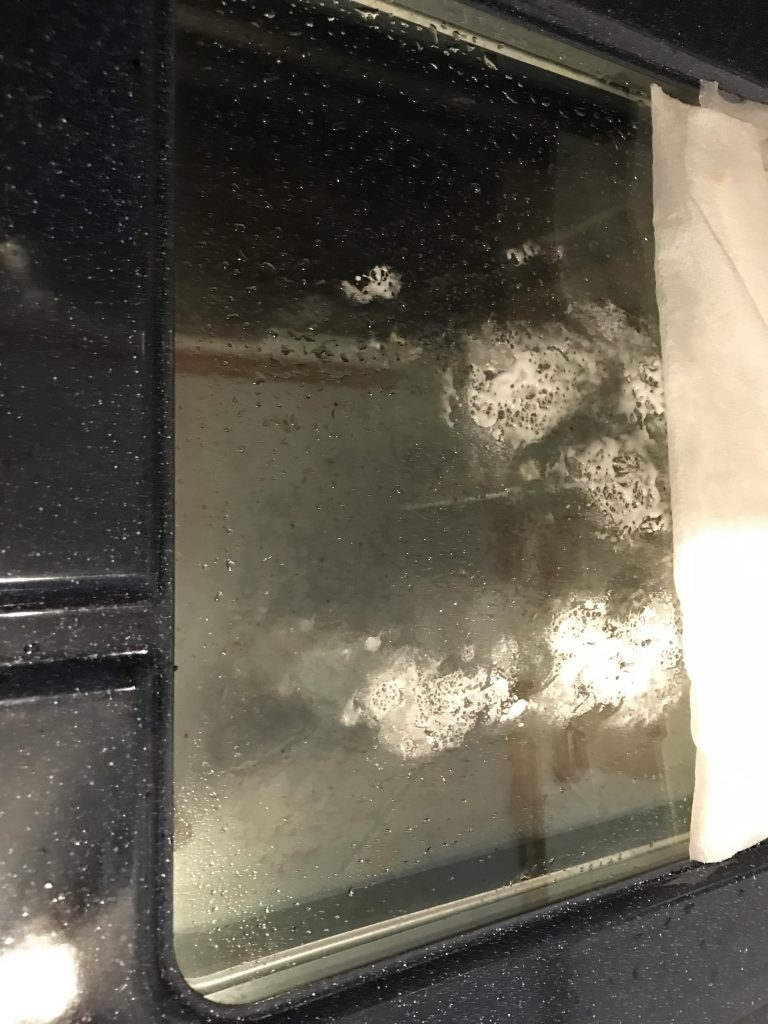
Sprinkle baking soda on the toughest stains and cover with a paper towel soaked in vinegar. 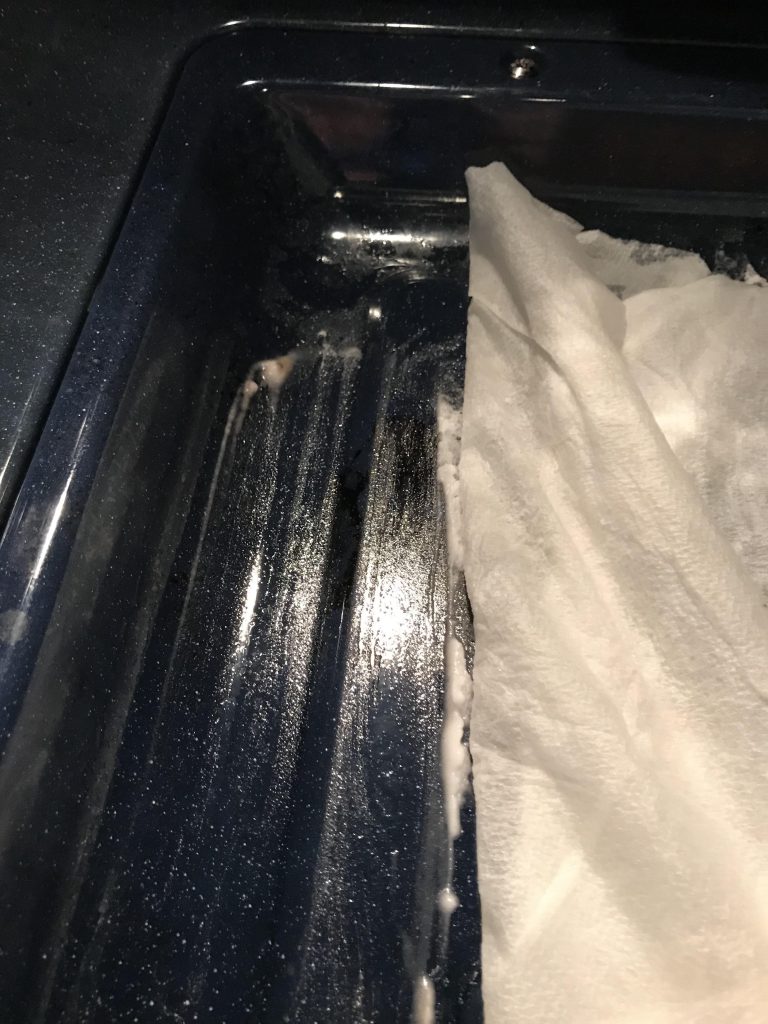
You can do this for both the glass and the base of the oven. 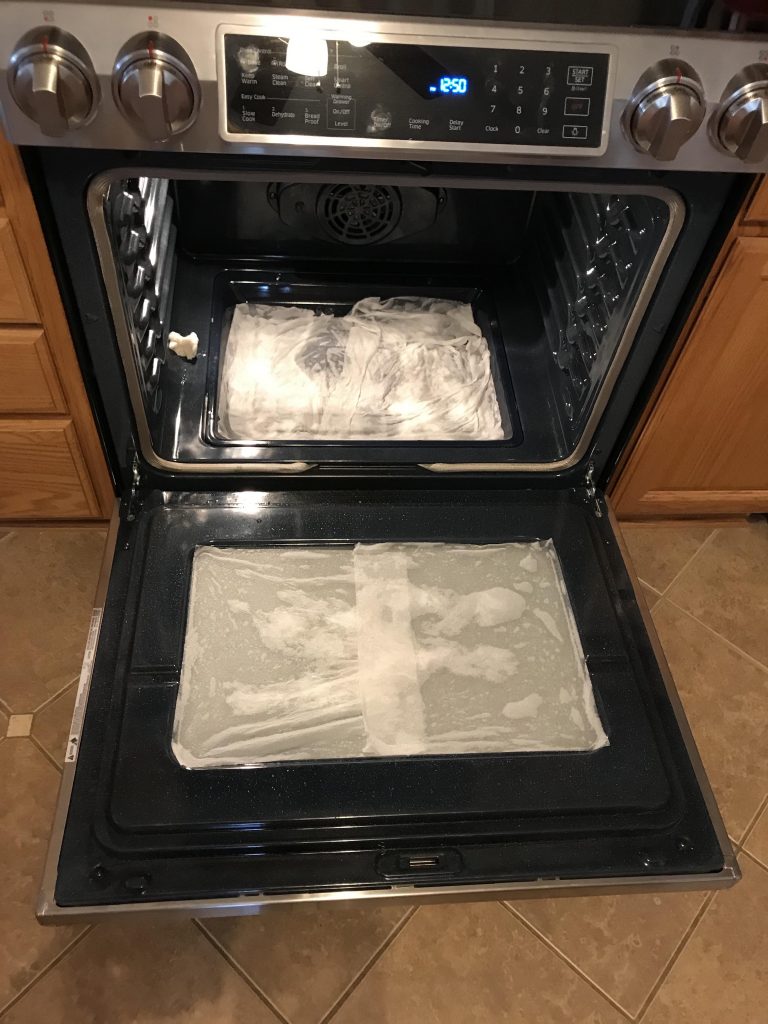
Let it sit for at least 10 – 15 minutes. 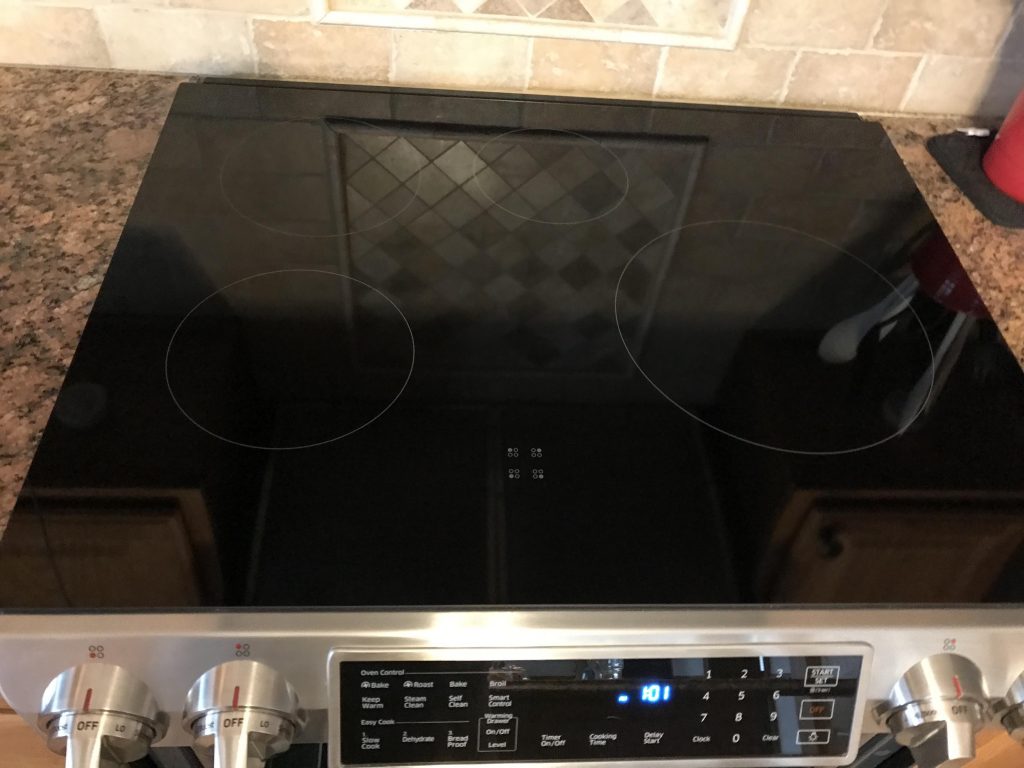
Meanwhile, you can clean the top of the stove. 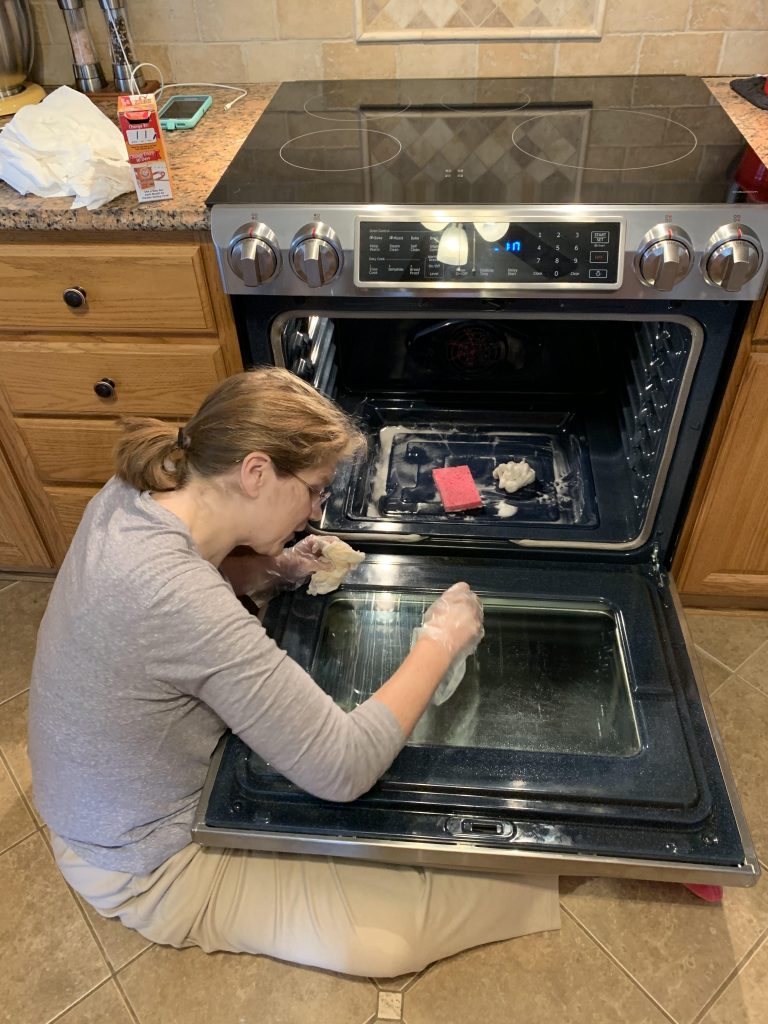
Find a comfortable spot, you’ll be here while. 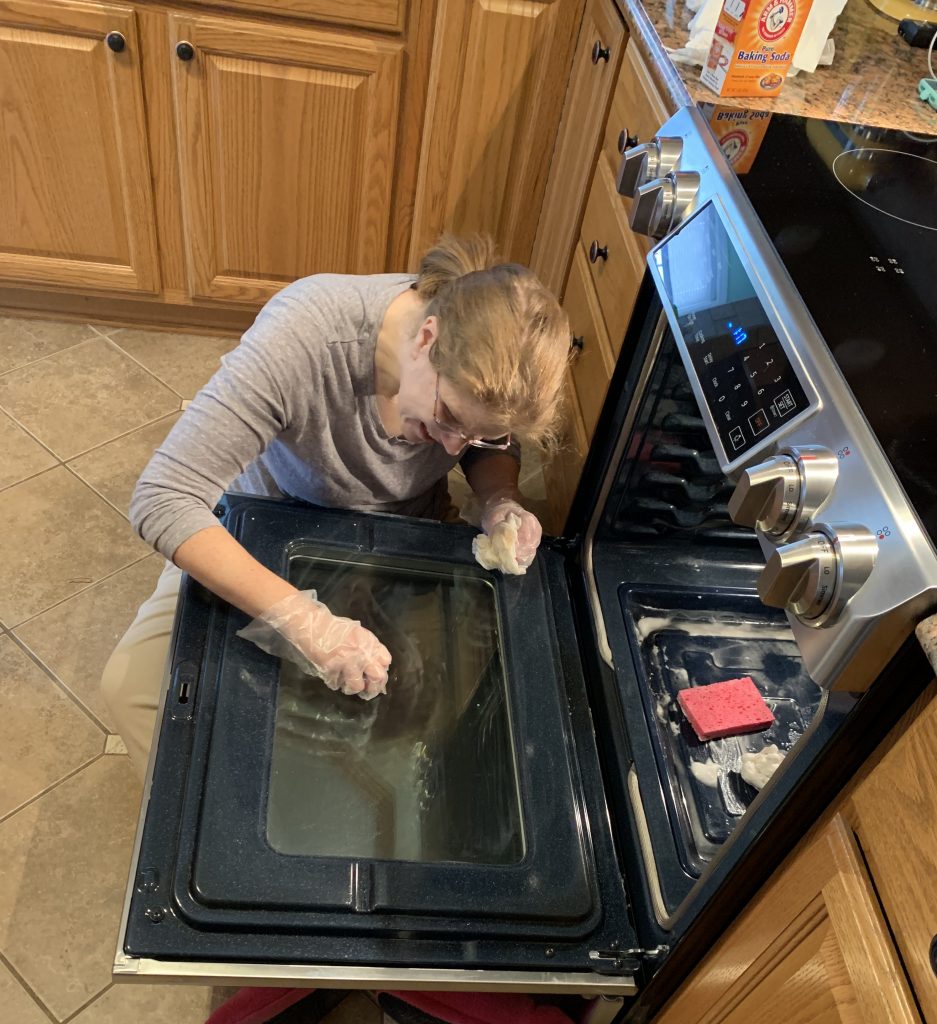
A razor blade if your oven allows will help clean the glass. 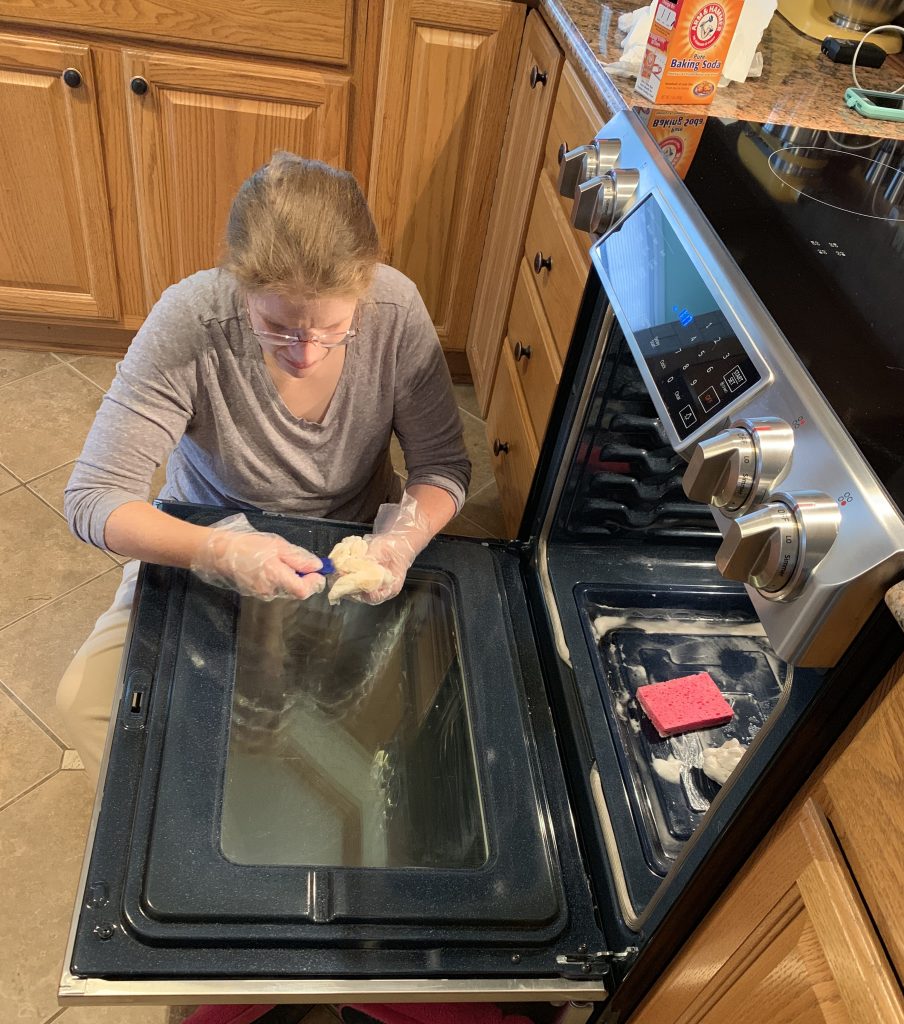
Go slow and at a 30° angle. 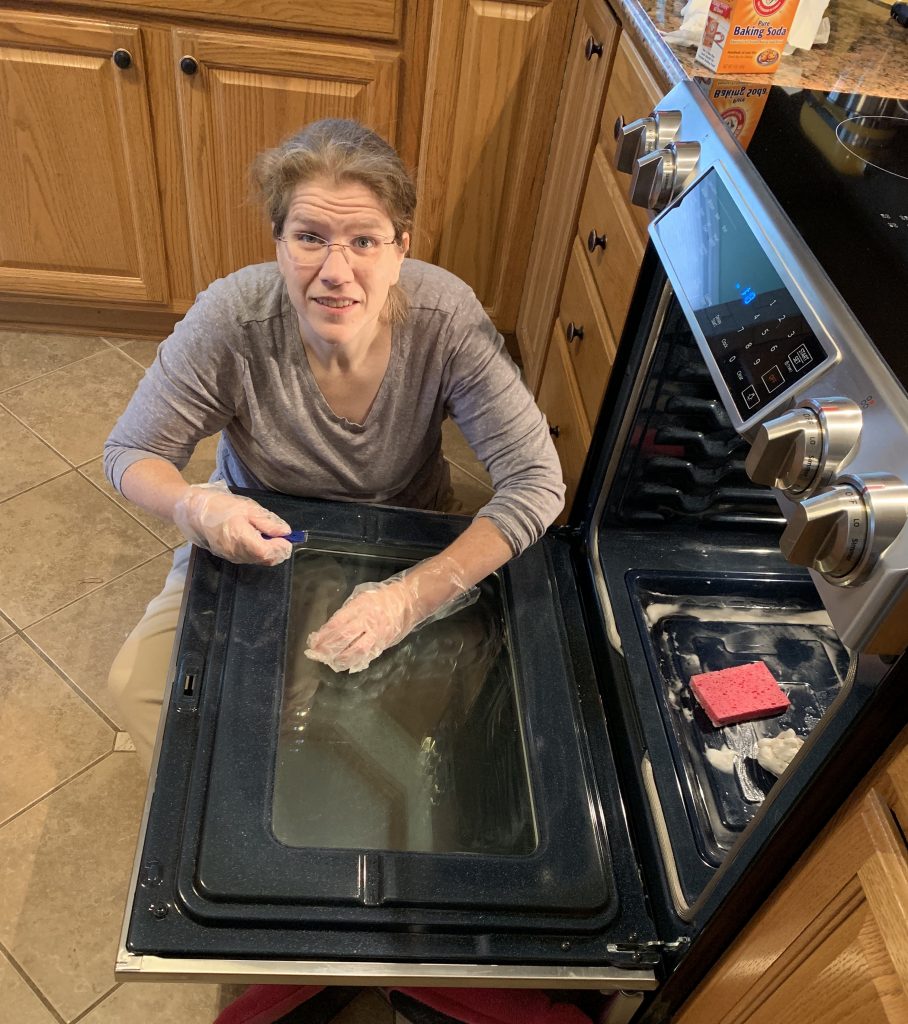
Smile for the camera! 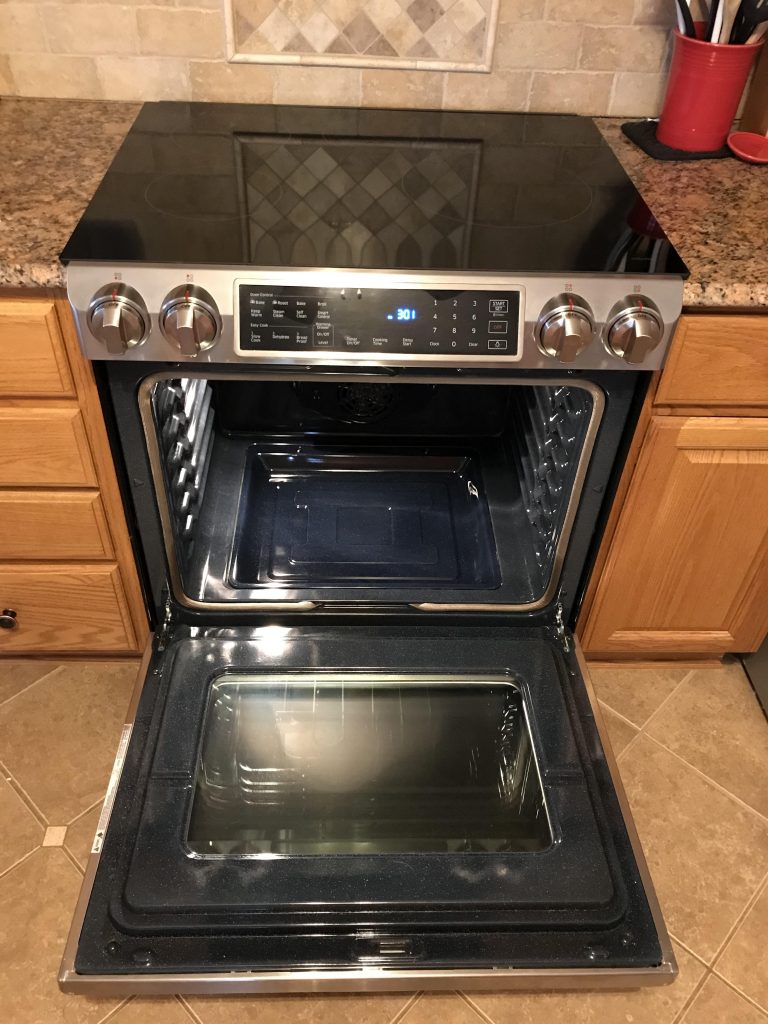
A few hours later, and you’re done! 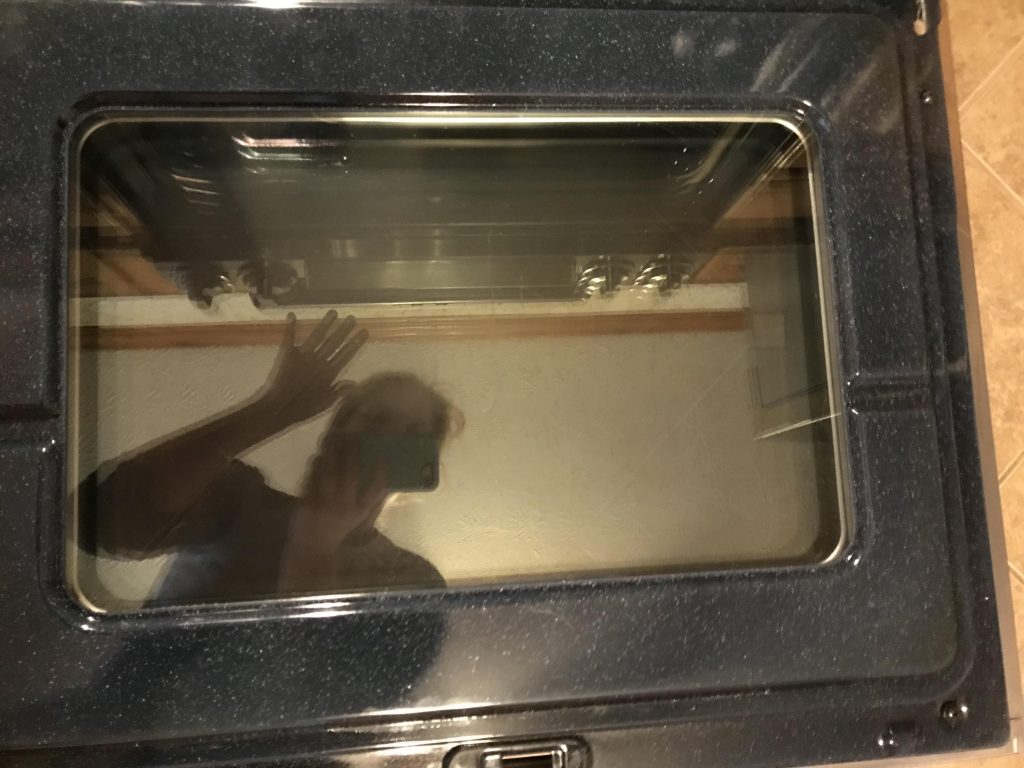
Happy baking!
Final note if you stuck around. Once you clean an oven, depending on how dirty it was, you may need to recalibrate your temperature. This is the time to buy an oven thermometer if you haven’t already.
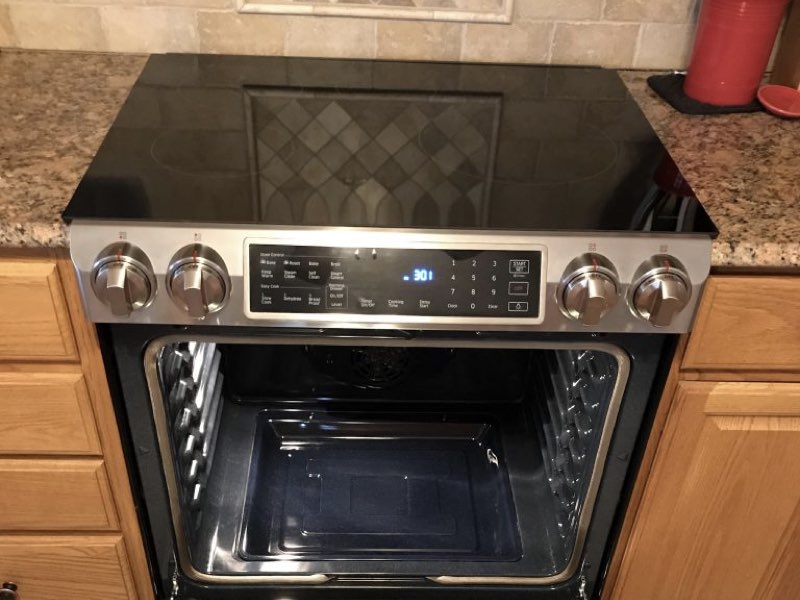
0 Comments